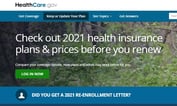After almost a year of dealing with the coronavirus pandemic, we still haven’t seen much relief. Stress remains high as the number of cases continues to rise and the economy hasn’t recovered. Families and hospital staff alike are struggling after nearly half a million Americans have been hospitalized due to COVID-19 complications.
Health care and health insurance costs are likely to rise even more as a result of the pandemic. On top of that, surprise medical billing can quickly add up to large amounts of debt; routine tests alone can result in thousands of dollars in uncovered charges. This is damaging not only for patients but for carriers, payers and the industry at large.
(Related: Health Plans Must Post Doctor Care Cost Estimators by 2023: Federal Regulators)
It’s time to reexamine how our health care system is failing consumers, starting with the lack of transparency for consumers. Greater transparency is the first step to helping patients take charge of their health care by allowing them to make more informed decisions.
Transparency is now a must-have for health care payments. Here’s why.
1. Quality and cost should drive provider selection.
The status quo in the health care industry isn’t working because consumers don’t have a single source of truth about provider cost and quality. When we purchase retail items, we have multiple tools available to compare prices and read reviews to ensure the best quality at the best cost. Why wouldn’t consumers have the same experience with health care?
While insurance sponsors might work to educate consumers on how to find an in-network provider, the process isn’t exactly easy. The member may be able to find a provider who takes their insurance, but many insurance carriers have a ‘Find a Provider’ tool that has some aspect of price or force ranking of providers. Given the lack of transparency, consumers aren’t able to select the right provider to fit their care needs and budget.
Consumers need data to make their decision on which provider to choose. Yes, part of that includes price transparency, but high price doesn’t always mean high quality. Human interaction is also crucial to a good doctor-patient relationship. Having a tool that displays in-network providers who are accepting patients, affordably priced and providing high quality is huge for empowering consumers in their health care journey.









 December 01, 2020 at 05:00 AM
December 01, 2020 at 05:00 AM












 Terry Rowinski is president and chief executive officer of
Terry Rowinski is president and chief executive officer of